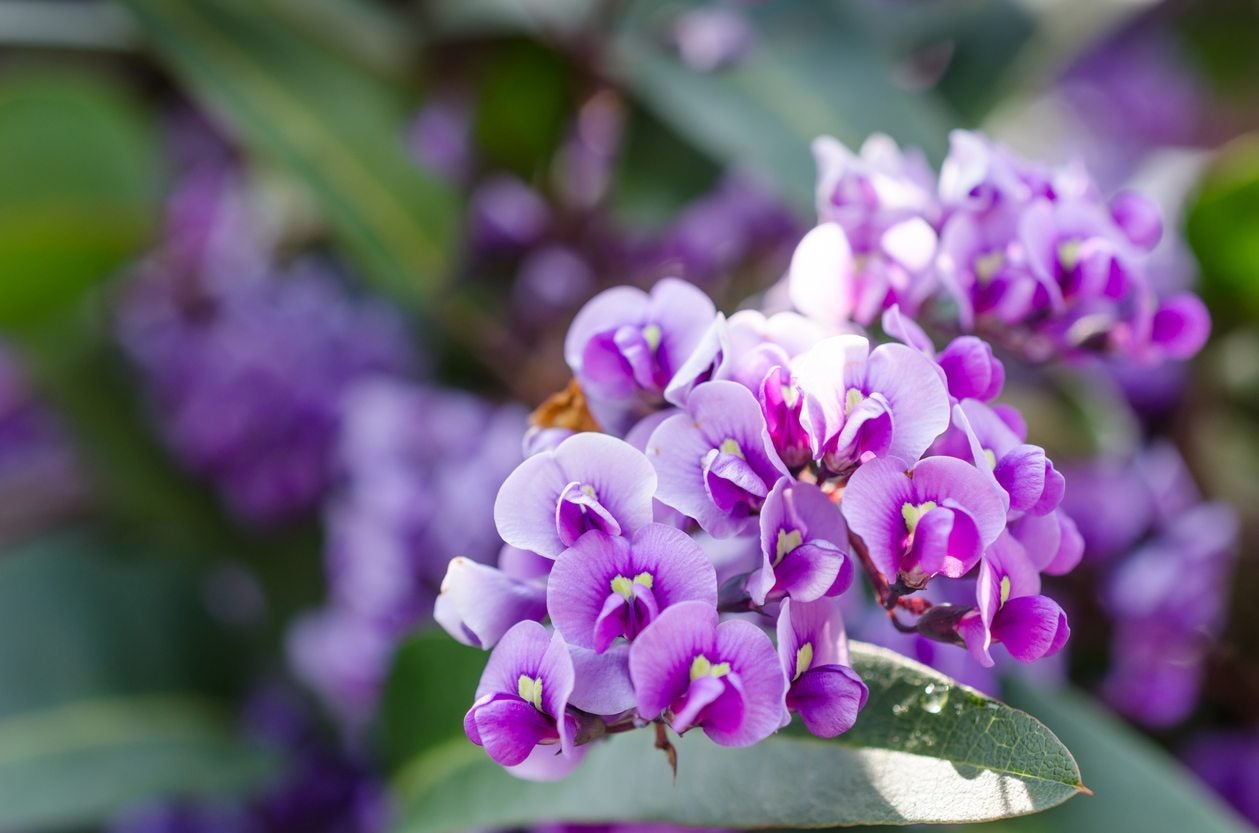Vine Lilac Care – How To Grow Purple Lilac Vines In The Garden


Purple vine lilac is a vigorous flowering vine native to Australia. In the spring, it produces masses of showy, beautiful purple flowers. Keep reading to learn more about vine lilac care and how to grow purple lilac vines in the garden.
Purple Vine Lilac Info
What is hardenbergia? Purple vine lilac (Hardenbergia violacea) goes by many names, including false sarsaparilla, Australian sarsaparilla, purple coral pea, and just plain Hardenbergia. It is native to southeast Australia, where it thrives in rocky soils. It is not particularly cold hardy and can only live outdoors in USDA zones 9 to 11 (in zone 9 it may require protection from frost).
In warm environments, it grows as an evergreen and can reach 50 feet (15 m.) in length. In late winter and early spring, it produces hanging strings of small, clustered flowers that resemble pea blossoms. Some cultivars produce pink or white flowers, but the most common color is purple.
How to Grow Purple Lilac Vines
Growing a lilac vine can be overwhelming if you don’t keep the plant in check. Hardenbergia can reach 50 feet (15 m.) in length, and it will twine itself around and climb everything in its path. Choose your planting site carefully and make sure it has a large, sturdy structure to climb or plenty of open ground to spread over. Vine lilac care is relatively simple.
Some pruning can be done at any time to keep it in check. Severe pruning (to half or even a third of its size) can be done in spring after blooming is finished in order to keep the vine’s growth in check. Purple lilac vines are drought tolerant and need well-draining soil. They should be watered occasionally, giving the soil a chance to dry out between waterings.
They will thrive in full sun in areas with temperate summers. If your summers are especially hot, plant your vine in a spot that receives some afternoon shade.
Gardening tips, videos, info and more delivered right to your inbox!
Sign up for the Gardening Know How newsletter today and receive a free copy of our e-book "How to Grow Delicious Tomatoes".

The only child of a horticulturist and an English teacher, Liz Baessler was destined to become a gardening editor. She has been with Gardening Know how since 2015, and a Senior Editor since 2020. She holds a BA in English from Brandeis University and an MA in English from the University of Geneva, Switzerland. After years of gardening in containers and community garden plots, she finally has a backyard of her own, which she is systematically filling with vegetables and flowers.
-
 Looking For Plants To Give You The Soft And Fuzzies? Try These 5 Fuzzy Leaf Plant Options
Looking For Plants To Give You The Soft And Fuzzies? Try These 5 Fuzzy Leaf Plant OptionsLovers of texture, drama, silver foliage and tactile plants will adore these special sensory garden additions. These fuzzy leaf plant options will leave you all aglow
By Susan Albert
-
 Get Ready For A Summer Of Hummers! Grow These Full Sun Hummingbird Plants and Flowers
Get Ready For A Summer Of Hummers! Grow These Full Sun Hummingbird Plants and FlowersIf you’re lucky enough to enjoy a sunny backyard, make sure you are maxing out on your pollinator opportunities and grow these full sun hummingbird plants and flowers
By Tonya Barnett